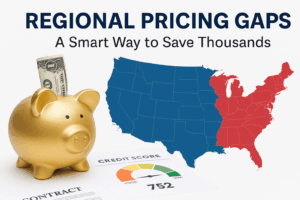Cashback offers are everywhere in the car market. Dealers promote them. Manufacturers advertise them. Buyers chase them. But cashback stacking is not just a pricing tactic. It is a psychological trigger that shapes how people think and act during the buying process.
Cashback stacking means combining multiple incentives. These can include manufacturer rebates, dealer discounts, trade-in bonuses, and financing perks. When stacked together, they reduce the final price of a vehicle. Buyers see the numbers drop and feel like they are winning. That feeling drives behavior more than most realize.
Why Cashback Works on the Brain
Cashback taps into loss aversion. People hate losing more than they enjoy gaining. A $2,000 rebate feels like money saved, not just a discount. That emotional response creates urgency and makes the deal feel exclusive.
It also triggers anchoring. Buyers fixate on the original price. Every discount feels like a reward, even if the starting price was padded. A $35,000 car with $4,000 in stacked incentives feels like a better deal than a $31,000 car with no offers, even if the final cost is the same.
How Stacking Shifts Buyer Priorities
When buyers see multiple offers, they stop comparing cars based on features or long-term value. Instead, they compare based on perceived savings. A car with three incentives feels more attractive than one with none, even if the difference is small.
This shift affects timing. Buyers wait for sales events, year-end clearances, or holiday promotions. They believe more stacking opportunities will appear. That belief delays purchases and concentrates demand around specific dates.
It also affects brand loyalty. Buyers often return to brands or dealers that offer better stacking combinations. This behavior is known as loyalty stacking. It is not just about the car. It is about the structure of the deal. Buyers remember where they felt rewarded and seek that experience again.
How Framing Shapes Perception
Dealers and automakers use framing to guide how buyers see value. They present offers as limited-time, exclusive, or stackable. This language creates urgency and scarcity. Buyers feel pressure to act before the deal disappears.
Framing also changes how buyers interpret value. A $1,000 rebate sounds better when paired with a $500 trade-in bonus and a $250 financing credit. The total savings feel larger, even if the individual parts are modest.
Why Buyers Feel More in Control
Cashback stacking gives buyers a sense of control. They feel like they are building their own deal. They choose the car, negotiate the price, apply the incentives, and walk away with a lower payment. That process reinforces autonomy and satisfaction.
It also reduces regret. Buyers who stack multiple offers are less likely to feel they overpaid. They believe they maximized value. That belief supports post-purchase confidence and reduces buyer’s remorse.
The Risk of Overvaluing the Deal
Stacking can lead to real savings, but it can also distort judgment. Some buyers focus so much on the deal that they overlook long-term costs. They may choose a car with higher maintenance, lower resale value, or poor fuel efficiency just because the upfront discount felt better.
Others may stretch their budget. A buyer planning to spend $28,000 may justify a $32,000 car because it comes with $3,000 in stacked incentives. The final payment may still exceed their comfort zone.
That is why it is important to separate deal psychology from financial reality. Incentives should support smart decisions, not override them.
How Dealers Use Stacking to Close Sales
Dealers understand the psychology. They design offers to trigger emotional responses. They bundle incentives, highlight savings, and use visual cues to reinforce value. Some even train staff to present stacking as a reward for negotiation.
This strategy works. Buyers feel like they earned the deal. They are more likely to commit, less likely to walk away, and more willing to recommend the dealership to others.
How Buyers Can Stay Grounded
To make smart decisions, buyers should:
- Focus on total cost, not just the discounts.
- Compare across models, not just offers.
- Set a budget before seeing the deal.
- Ask for a full breakdown of each incentive.
- Avoid rushing just because the deal feels exciting.
These steps help buyers stay focused and avoid common traps.
Final Thought
Cashback stacking is not just a pricing strategy. It is a psychological tool. It shapes how buyers think, feel, and act. When used wisely, it can lead to real savings and satisfaction. When used carelessly, it can lead to overspending and regret.
Understand the mechanics. Recognize the triggers. And when the incentives stack up, make sure your judgment does too.




